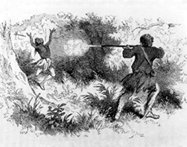Category Archive 'George Washington'
22 Feb 2013


Col. George Washington, Foxhunter (Ralph Boyer, aquatint, Fathers of American Sport, Derrydale Press, 1931)
David Hackett Fischer (who first traced the pre-Revolutionary influence of four different regions and cultures of Great Britain upon the United States in Albion’s Seed , 1989), in Bound Away: Virginia and the Westward Movement , 1989), in Bound Away: Virginia and the Westward Movement , written with James C. Kelly and published in 2000, identifies another major and distinctive pre-Revolutionary regional American cultural strain: a tradition of elite patriotism most prominently exemplified in George Washington, but originating from the influence of his friend and mentor, Lord Fairfax. , written with James C. Kelly and published in 2000, identifies another major and distinctive pre-Revolutionary regional American cultural strain: a tradition of elite patriotism most prominently exemplified in George Washington, but originating from the influence of his friend and mentor, Lord Fairfax.
The Northern Neck [i.e. the region between the Potomac and Rappahannock Rivers] rapidly developed into a distinctive region of Virginia with a character that was largely defined by Lord Fairfax himself and his friends and agents, who included the Washington, Lee, and Marshall families.
Fairfax liked the country so well that he returned as an immigrant in 1747 and made his permanent home in Virginia. He built himself a long, rambling hunting lodge called Greenway Court and a small stone land office high in the Shenandoah country at the western end of his domain. At the same time he became justice of the peace of all the counties in the Northern Neck, county lieutenant, and commandant of the militia. Lord Fairfax acquiesced in the American Revolution and was treated always with honor both by the people of the Northern Neck and the Virginia General Assembly. He died at Greenway Court in 1781 at the age of eighty-eight.
In the course of his long life, a circle formed around him. Lord Fairfax’s drawing room became a school of manners for young gentlemen of the Northern Neck —among them, many Washingtons, Lees, Marshalls, and others who shared a distinctive set of values and beliefs.
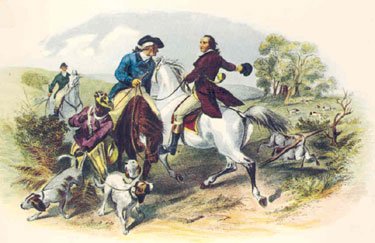
Lord Fairfax Fox Hunting with George Washington, engraving by Henry Bryan Hall, after Felix O. C. Darley, from Washington Irving, Life of George Washington, 1855-1859
The Northern Neck was very much a part of the culture of Virginia, but it gave that culture a special meaning. On this frontier there was little of democracy and nothing of equality, but a strong tradition of service, character, right conduct, and the rule of law.
We have been trained by the materialism of American social science to think of regional culture as a reflex of economic interests and environmental conditions. So it is sometimes, but the culture of the Northern Neck was shaped when it was a frontier, in large degree by the interplay of culture, environment, and the purposes of a single individual. A cultural tradition was planted by Lord Fairfax at Greenway Court. It took root in the fertile soil of the Northern Neck and flowered in the careers of George Washington in the Revolution, Robert E. Lee in the Civil War, and George C. Marshall in World War II.
The values of this tradition were in many ways different from the liberal ideas on which the American republic was founded. Yet this tradition supplied that nation with many leaders who served it in a distinctive way. The Northern Neck was the cradle of their culture, and Lord Fairfax was its founding father.
George Washington, born today in 1732, was obviously the greatest epigone of the Northern Virginia tradition of scrupulously dutiful aristocratic leadership. Without Washington, the thirteen colonies could not have won the War for American Independence. As president, Washington then proceeded to establish personally the examples of Republican modesty and executive forbearance which defined the fundamental character of American goverment.
26 Nov 2012
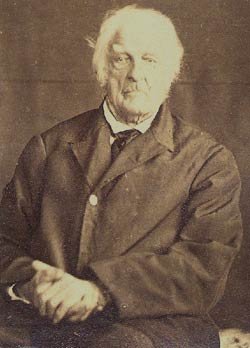
Lemuel Cook (September 10, 1759 – May 20, 1866)
Lemuel Cook was born in Litchfield County, Connecticut, enlisted in Sheldon’s Horse, the 2nd Continental Light Dragoons, fought in Westchester County, at the Battle of Brandywine, in the Virginia Campaign, and was present at Cornwallis’s surrender. He received a discharge, with George Washington’s signature, in 1784. He lived long enough to survive the Civil War and was one of seven Revolutionary War veterans who survived long enough to be photographed.
He was profiled and some of his recollections were published here.
22 Nov 2012

As published in the Massachusetts Centinel, Wednesday, October 14, 1789
01 Sep 2012

More interesting than any mere ordinary presidential campaign is Geoff Micks‘s theoretical question:
In a mass knife fight to the death between every American President, who would win and why?
Micks gives each president a lousy mass-produced, tactical-styled Gerber LRH. I think it would be more considerate to give them something a little better. My choice is the Randall Number 1 — All Purpose Fighting Knife. Each president can select his preferred blade length from 5 to 8″.
I don’t think Micks is far off on his analysis of the odds.
I think, though, that George Washington may have a better chance than Micks supposes. Washington was a large, powerful, and physically graceful man, and he was notoriously aggressive by temperament. After all, as a young lieutenant, George Washington essentially singlehandedly started the French and Indian War.
Teddy Roosevelt was game, and I think he would have made a spirited effort, hurrying into the fight, but let’s face it, Teddy was a four-eyed rich boy who went to Harvard. He was fine at shooting lions and bears, but it’s not certain that TR ever actually killed anybody.
The obvious truth is, in the history of the American presidency, only one stone cold killer has ever occupied the Oval Office. The number of duels fought by Andrew “By God” Jackson varies in different accounts. Some authorities claim he fought 13 times. There is no doubt at all, though, that Andrew Jackson, after first taking a bullet, shot Charles Dickinson dead in 1806, observing afterwards that “If he had shot me through the brain, I would still have killed him.”
Andrew Jackson survived the first assassination attempt on an American president, and actually subdued and arrested his own assailant. Some accounts say that Jackson produced a pair of pistols out of his pockets. Others claim that Jackson beat the would-be assassin into unconsciousness with his cane.
On his death bed, Jackson reportedly remarked: “I have only two regrets: I didn’t shoot Henry Clay and I didn’t hang John C. Calhoun.”
It seems to me that with respect to readiness to fight, competence, and iron resolution, not even Washington could hope to compete with Old Hickory.
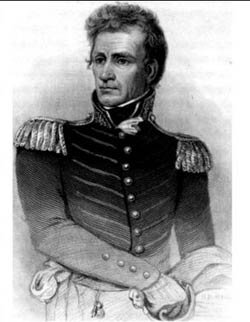
Andrew Jackson
Hat tip to Troy Senik.
20 Feb 2012


The Northern Neck (click on image for larger version)
David Hackett Fischer (who first traced the pre-Revolutionary influence of four different regions and cultures of Great Britain upon the United States in Albion’s Seed , 1989), in Bound Away: Virginia and the Westward Movement , 1989), in Bound Away: Virginia and the Westward Movement , written with James C. Kelly and published in 2000, identifies another major and distinctive pre-Revolutionary regional American cultural strain: a tradition of elite patriotism most prominently exemplified in George Washington. , written with James C. Kelly and published in 2000, identifies another major and distinctive pre-Revolutionary regional American cultural strain: a tradition of elite patriotism most prominently exemplified in George Washington.
The Northern Neck rapidly developed into a distinctive region of Virginia with a character that was largely defined by Lord Fairfax himself and his friends and agents, who included the Washington, Lee, and Marshall families.
Fairfax liked the country so well that he returned as an immigrant in 1747 and made his permanent home in Virginia. He built himself a long, rambling hunting lodge called Greenway Court and a small stone land office high in the Shenandoah country at the western end of his domain. At the same time he became justice of the peace of all the counties in the Northern Neck, county lieutenant, and commandant of the militia. Lord Fairfax acquiesced in the American Revolution and was treated always with honor both by the people of the Northern Neck and the Virginia General Assembly. He died at Greenway Court in 1781 at the age of eighty-eight.
In the course of his long life, a circle formed around him. Lord Fairfax’s drawing room became a school of manners for young gentlemen of the Northern Neck —among them, many Washingtons, Lees, Marshalls, and others who shared a distinctive set of values and beliefs.

Lord Fairfax Fox Hunting with George Washington, engraving by Henry Bryan Hall, after Felix O. C. Darley, from Washington Irving, Life of George Washington, 1855-1859
The Northern Neck was very much a part of the culture of Virginia, but it gave that culture a special meaning. On this frontier there was little of democracy and nothing of equality, but a strong tradition of service, character, right conduct, and the rule of law.
We have been trained by the materialism of American social science to think of regional culture as a reflex of economic interests and environmental conditions. So it is sometimes, but the culture of the Northern Neck was shaped when it was a frontier, in large degree by the interplay of culture, environment, and the purposes of a single individual. A cultural tradition was planted by Lord Fairfax at Greenway Court. It took root in the fertile soil of the Northern Neck and flowered in the careers of George Washington in the Revolution, Robert E. Lee in the Civil War, and George C. Marshall in World War II.
The values of this tradition were in many ways different from the liberal ideas on which the American republic was founded. Yet this tradition supplied that nation with many leaders who served it in a distinctive way. The Northern Neck was the cradle of their culture, and Lord Fairfax was its founding father.
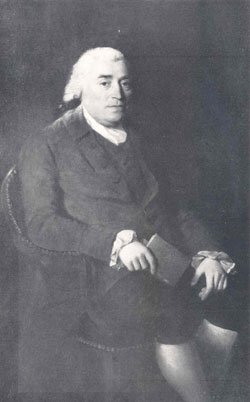
Joshua Reynolds, Thomas Fairfax, Sixth Lord Fairfax of Cameron, Washington Lodge No 22, A. F. & A. M., Alexandria, Virginia.
24 Nov 2011

As published in the Massachusetts Centinel, Wednesday, October 14, 1789
24 Feb 2011


The church where Washington was a vestryman.
Bryan Preston reports on the lengths that the Episcopal Church has been willing to go to punish parishes attempting to break away as the result of the ordination of an avowedly practicing homosexual as bishop.
I’m not at all religious and this story makes my blood boil. It must be seriously annoying to actual believing Christians.
The town of Falls Church, VA, gets its name from the beautiful historic church at its heart. The Falls Church was built in the time of George Washington, who was himself a vestryman at the church, and the original chapel still stands amid a far larger and more modern campus, and today boasts about 2,500 members. According to a historical marker nearby, the Falls Church was a recruiting station for the fledgling army that Washington led. But today the Falls Church is the target of a scorched earth campaign that the Episcopal Church USA, now called The Episcopal Church (TEC) is waging against several of its own congregations.
The Falls Church’s differences with TEC began over doctrinal issues in the 1970s, but came to a head in 2003 with the Episcopal Church’s ordination of the first non-celibate gay bishop. Many Episcopal churches, including the Falls Church and seven others in northern Virginia, elected to separate from TEC and created a parallel church network aligned with the Anglican Communion. But TEC claimed ownership of the Falls Church’s sprawling campus, and a lawsuit soon followed to wrest the property away from the congregation. Claiming alienation of property, the Episcopal Church went to courtroom war against its breakaway flocks.
The TEC’s lawsuit against the eight churches hinges on property ownership: Who owns the buildings and lands where the congregations meet? What would seem to be a straightforward issue, isn’t, thanks in part to how Episcopal churches are governed. Episcopal churches exist somewhere between Catholic parishes, the properties of which rest solely in the hands of bishops, and most Protestant churches, which own their own properties independent of their denomination or larger structural organization. Unlike Catholic churches, Episcopal churches exercise some independence from the larger church and have the power to vote on whether to sever ties with TEC. These churches did just that. But unlike other Protestant churches, Episcopal churches exercise somewhat less independence from their larger church. But the deeds to the properties in question are in the names of the local trustees, not the TEC itself.
These churches also predate the founding of the Episcopal diocese in Virginia itself. In fact, they are among its founding churches. Falls Church itself dates back to 1734. The diocese that is suing it is three decades its junior.
Nevertheless, the Episcopal Church has continued to wage a very expensive war in court. Jim Oakes, chairman of the Anglican Division of Virginia, estimates that the case has cost the local churches and TEC between $5 million and $8 million on both sides, or between $10 million to $16 million total. For churches that exist to provide ministry to families and towns, those millions could have surely been put to much better use than hiring lawyers and engaging in legal proceedings that have now lasted five years.
As the years have worn on, the churches have offered to settle out of court at each stage, only to be rejected by the Episcopal Church, and then have prevailed over TEC in court. That changed when the case made it all the way to the Virginia Supreme Court, which handed the case back down to the circuit level after finding that the law at the heart of the case – called the division statute – did not apply in this case.
That trial is now set for the end of April, and is expected to take about six weeks. One Falls Church congregant I spoke with worries not just about the eventual ownership of the properties, but about the eventual intentions of the Episcopal Church itself. When I asked what was the worst case scenario, he pointed me to the outcome of a similar case in Binghamton, New York. The Episcopal Church’s victory over a breakaway church there led to this:
The Church of the Good Shepherd, which has stood at #79 Conklin Avenue since 1879, has been willingly turned over to a Muslim entity by the Episcopal Diocese of Central New York, rather than have it remain in the hands of traditional Anglicans who practice the faith once for all delivered to the saints.
The death knell for the structure as a Christian house of worship was delivered on February 9, 2010, when it was sold to Imam Muhammad Affify, doing business as the Islamic Awareness Center, for a mere $50,000, a fraction of the church’s assessed $386,400 value.
Now, two months later, the classic red Anglican doors have been repainted green, the simple cross on top of the steeply peaked bell tower has been lopped off, and a windowpane cross in the side door has been disfigured leaving only narrow vertical glass with the cross beam being painted over to hide it. The Muslims consider the cross a pagan symbol.
Meanwhile the Rev. Matt Kennedy, his wife and partner in ministry Anne, their young family and congregation were sent packing in the bitter cold and deep snow in January 2008 when the New York Supreme Court ordered them to relinquish the 130-year-old church building which stands overlooking the meandering Susquehanna River.
Good Shepherd had offered to purchase the property before any legal proceedings began, but TEC refused, just as it has refused to settle with the majority of the Virginia churches. After winning the Binghamton suit, TEC sold the historic church to the Islamic group for about a third of what the congregation had offered. …
[An Episcopalian source describing a similar case in Leesburg, VA, notes:]
Presiding Bishop Katharine Jefferts Schori is on record saying she would sooner see fleeing parishes sold for saloons than see them affiliate with African and Southern Cone dioceses that uphold “the faith once delivered for all to the saints.â€
Saloons rather than traditional churches? That is why the word “jihad†is in the title of this article. The Episcopal Church’s actions in Binghamton and elsewhere defy reason, unless they were intended to send a very strong and unmistakable message to traditional congregants who might be thinking of breaking away: Defy us, and we will not only hound and possibly crush your congregation through expensive lawsuits, we will see that your cherished houses of worship are desecrated. And we will go to any lengths to send this message, even if we must turn your houses of worship into saloons, or mosques. Even if George Washington himself once worshiped there.
Hat tip to Karen L. Myers.
21 Feb 2011


The submersion of the national holiday honoring George Washington into a generic and meaningless “Presidents Day” is one of the nearly too-many-to-count bad things we owe to the administration of the late and unlamented Richard Nixon. A number of editorialists this year are arguing that America needs to do the right thing by going back to honoring our first, and possibly greatest, national hero.
John R. Miller:
In 1968, the public-employee unions, seeking a three-day weekend, convinced Congress to move the commemoration of Washington’s birthday to the third Monday in February. This eventually led to what we now call Presidents Day, which marks the birthday not only of Washington but of Lincoln and all other presidents. By celebrating every birthday, we effectively celebrate none.
Washington’s contemporaries hailed his Revolutionary War victories at Trenton and Yorktown, but they honored him more for risking his fame, fortune and life in taking on military responsibilities for which he wasn’t paid—and then giving up command to return to his farm and family. The young American citizenry esteemed him for bringing together and presiding over the Constitutional Convention, but they honored him more for his steadfastness in holding the colonies together and facing down potential insurrectionists who might have seized the government and made him a military dictator. And while they appreciated him returning to public service as president, they honored him more for leaving an office that many expected him to hold for life.
Americans in the 18th and 19th centuries were unaware of, but they would not have been surprised by, what King George III supposedly said upon hearing that Washington, after winning the Revolutionary War, had refused to be king: “If that is true, he must be the greatest man in the world.” …
Our ancestors expected that America would produce other great leaders. But they celebrated Washington’s birthday because, as the Connecticut Courant observed in 1791, “Many a private man might make a great president; but will there ever be a President who will make so great a man as WASHINGTON?”
——————————————-
Basil explains that the federal holiday really is still officially designated as Washington’s Birthday.
I know. Some of you thought today was “Presidents’ Day.†Don’t let that bother you. Some of you believe in the Loch Ness Monster, UFOs, and that Elvis works at a Burger King in Michigan.
Where I come from, we usually look at such people and say “Bless their heart.†That’s Georgia-speak for “What a dumbass.â€
I know, the calendar you got at the kiosk at the mall has “Presidents Day†written in the little block for today. Well, about those people that made that calendar? Bless their heart.
I know, all the TV and radio ads talk about “Presidents Day†sales going on today. Those people that wrote those commercials? Bless their heart.
Today’s a federal holiday. And, it’s “Washington’s Birthday.†Take a look at United States Code 5 U.S.C. 6103 and see what it says. Sure enough, it says “Washington’s Birthday.â€
Now, the truth is that George Washington’s birthday isn’t until tomorrow. In fact, the official federal holiday for Washington’s Birthday never falls on his actual birthday. Who else but the government could screw up a birthday so bad? And some folks want them in charge of health care. Bless their heart.
Why do I make a big deal about what today is called? Because I think it’s bad idea to ignore history. George Washington was actually a pretty important guy in American history. Important enough to actually give a holiday for his birthday. …
In 1968, the movement to change many holidays to a nearby Monday began. In 1971, Richard Nixon issued Executive Order 11582, beginning that process. Still, the holiday is officially Washington’s Birthday, and has always been Washington’s Birthday. (Snopes has a write-up about this, too, by the way.)
Some states observed Abraham Lincoln’s birthday (February 12). Some still might. And some people got the idea that the new federal holiday in February was for Washington and Lincoln. Bless their heart.
Somewhere along the way, people began to call today’s holiday “Presidents’ Day.†Whether by design or not, it contributes to the ignorance of Americans. It ignores the importance of George Washington. And it causes many Americans to either forget or never understand the contributions of George Washington in the formation of this great country.
So, I wish you a very pleasant Washington’s Birthday today. Some of you are off work. Others, like me, have a regular work day. Whatever your plans are, take some time to remember George Washington.
And, if you’re celebrating Presidents Day today? Bless your heart.
24 Jan 2011


Free North Carolina reports on an interesting (and unseemly) symbolic aspect of the NAACP’s MLK Day festivities in South Carolina.
Monday, January 17, 2011, 2:17 PM
The annual MLK observance at the state house in Columbia SC had an interesting twist this year. The event is held on the north side steps of the statehouse. Prominent at that location is a large bronze statue of George Washington. This year, the NAACP constructed a “box” to conceal the Father of His Country from view so that participants would not be offended by his presence.
————————————–
The South Carolina NAACP found itself then in an embarassing position when its nasty little gesture attracted media attention, and responded by lying about what it had done and why.
Rock Hill Herald:
The S.C. NAACP said Tuesday it was not trying to hide a Statehouse statue of George Washington at its annual Martin Luther King Jr. Day rally Monday.
The group has draped the founding father’s statue at previous rallies. It did so again this year, and questions quickly arose about whether Washington was being slighted.
Not so, says the NAACP.
A three-sided structure that covered the front and sides of the statue was intended to display a rally graphic and serve as a photo-and-television backdrop for the event’s speakers, said S.C. NAACP executive director Dwight James. However, the graphic was not finished before the rally and could not be put in place. …
King Day organizers have built similar structures around the statue dating back at least to 2007, according to The State newspaper’s archives.
23 Feb 2010

Ten rules (sometimes fewer) for writing fiction from Elmore Leonard, Dianna Athill, Margaret Atwood, Roddy Doyle, Helen Dunmore, Geoff Dyer, Anne Enright, Richard Ford, Jonathan Franzen, Esther Freud, Neil Gaiman, David Hare, P.D. James, AL Kennedy, Hilary Mantel, Michael Moorcock, Michael Morpurgo, Andrew Motion, Joyce Carol Oates, Annie Proulx, Philip Pullman, Ian Rankin, Will Self, Helen Simpson, Zadie Smith, Colm TóibÃn, Rose Tremain, Sarah Waters, Jeanette Winterson.
—————————————————-

Col. George Washington, Foxhunter (Ralph Boyer, aquatint, Fathers of American Sport, Derrydale Press, 1931)
One day belated notice of the birthday of our neighbor and compatriot in the hunting fields of Clarke County, George Washington.
When he was 14 or 15 years old, George Washington copied out by hand 110 “Rules of Civility and Decent Behaviour in Company and Conversation.”
Washington’s maxims came from a translation of a treatise Bienseance de la Conversation entre les Hommes produced by the pensonnaires of the Jesuit Collège Royal Henry-Le-Grand at La Flèche in 1595. René Descartes studied at the same college just a few years later, 1607 to 1615.
The case of George Washington, I would suggest, can be taken to demonstrate that residence at Harvard, Yale, or even La Flèche is not an absolute requirement for leadership success or good manners.
—————————————————-
WSJ comments on the Obama plan to ram the health care bill through, damn the rules of the Senate and the wishes of the public.
The larger political message of this new proposal is that Mr. Obama and Democrats have no intention of compromising on an incremental reform, or of listening to Republican, or any other, ideas on health care. They want what they want, and they’re going to play by Chicago Rules and try to dragoon it into law on a narrow partisan vote via Congressional rules that have never been used for such a major change in national policy. If you want to know why Democratic Washington is “ungovernable,” this is it.
—————————————————-
David Brooks discovered that something has gone wrong with the meritocratic revolution, and wonders if this might have something to do with the new elite not being quite so meritorious as had been supposed.
[H]ere’s the funny thing. As we’ve made our institutions more meritocratic, their public standing has plummeted. We’ve increased the diversity and talent level of people at the top of society, yet trust in elites has never been lower.
It’s not even clear that society is better led. Fifty years ago, the financial world was dominated by well-connected blue bloods who drank at lunch and played golf in the afternoons. Now financial firms recruit from the cream of the Ivy League. In 2007, 47 percent of Harvard grads went into finance or consulting. Yet would we say that banks are performing more ably than they were a half-century ago?
Government used to be staffed by party hacks. Today, it is staffed by people from public policy schools. But does government work better than it did before?
Journalism used to be the preserve of working-class stiffs who filed stories and hit the bars. Now it is the preserve of cultured analysts who file stories and hit the water bottles. Is the media overall more reputable now than it was then?
The promise of the meritocracy has not been fulfilled. The talent level is higher, but the reputation is lower.
26 Nov 2009

As published in the Massachusetts Centinel, Wednesday, October 14, 1789
Your are browsing
the Archives of Never Yet Melted in the 'George Washington' Category.
/div>

Feeds
|

, 1989), in Bound Away: Virginia and the Westward Movement
, written with James C. Kelly and published in 2000, identifies another major and distinctive pre-Revolutionary regional American cultural strain: a tradition of elite patriotism most prominently exemplified in George Washington, but originating from the influence of his friend and mentor, Lord Fairfax.










